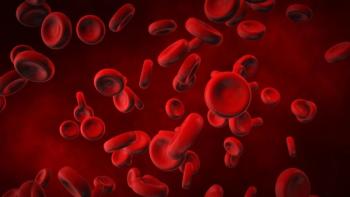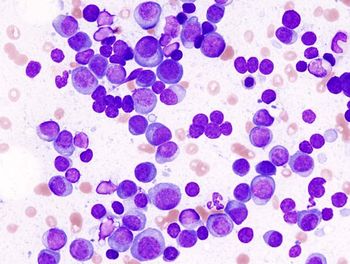
- ONCOLOGY Vol 13 No 3
- Volume 13
- Issue 3
506U78 in Indolent Leukemias: Pharmacokinetics of Arabinosylguanine Triphosphate Arabinosylguanine Triphosphate During Therapy
The success of purine nucleoside analogs in the treatment and management of indolent leukemias has generated interest in
The success of purine nucleoside analogs in the treatment and management of indolent leukemias has generated interest in other purine analogs, such as arabinosylguanine (ara-G). Synthesis and availability of a water-soluble prodrug of ara-G, 506U78 (2-amino, 6-methoxypurine arabinoside), provided the opportunity to investigate the efficacy of ara-G in indolent leukemias and to study its pharmacokinetics during therapy.
Twenty-five patients with indolent leukemias, such as B-cell chronic lymphocytic leukemia (B-CLL; N = 10), aggressive B-CLL (N = 4), T-cell chronic lymphocytic leukemia (T-CLL; N = 5), T-cell prolymphocytic leukemia (T-PLL; N = 4), and B-cell prolymphocytic leukemia (B-PLL; N = 2) were treated every 21-28 days, either daily for 5 days, on alternate days for three doses, or on alternate days for three doses of 506U78 with fludarabine (Fludara; 30 mg/m²) on days 3 and 5. The daily dose of 506U78 ranged between 0.8 and 2.9 g/m² infused over 1 or 2 hours.
Plasma pharmacokinetics of 506U78 and ara-G were proportional to dose and similar among the different diagnoses. In contrast, cellular pharmacologic investigations, conducted on the first day of treatment, demonstrated that accumulation of ara-G triphosphate (ara-GTP) was moderately dependent on dose (r = .49; P = .01; N = 25) but strongly dependent on diagnosis. Circulating B-CLL and T-PLL cells accumulated a median of 187 µM (range, 35-1,440 µM) and 338 µM (range, 22-619 µM) ara-GTP, respectively, which was higher than that in B-PLL, T-CLL, and aggressive B-CLL (median, 50 µM; range, 22-178 µM; N = 11). The elimination of ara-GTP was slow, with a median elimination half-life of > 24 hours (range, 9-> 42 hours; N = 13).
Preliminary assessments indicate that the majority of responses were observed in patients with B-CLL and T-PLL. Comparison of the cellular pharmacokinetics in responders and nonresponders demonstrated that the patients who achieved partial or complete remission had a median 350 µM peak level of ara-GTP (N = 11). This was significantly (P = .0005) higher than the concentration achieved in the cells of nonresponders (median, 50 µM; N = 14).
CONCLUSION: We conclude that 506U78 is an effective prodrug of ara-G, that the accumulation of ara-GTP was both dose- and diagnosis-dependent, and that the pharmacokinetics of ara-GTP in circulating leukemia cells were related to clinical response to this purine analog.
Articles in this issue
almost 27 years ago
WHO Declares Lymphatic Mapping to Be the Standard of Care for Melanomaalmost 27 years ago
Navelbine Increased Elderly Lung Cancer Patients’ Survivalalmost 27 years ago
Consensus Statement on Prevention and Early Diagnosis of Lung CancerNewsletter
Stay up to date on recent advances in the multidisciplinary approach to cancer.

















































































